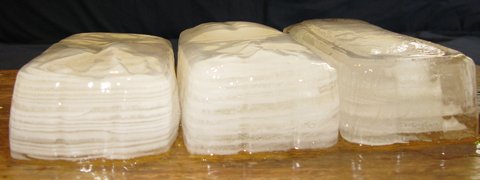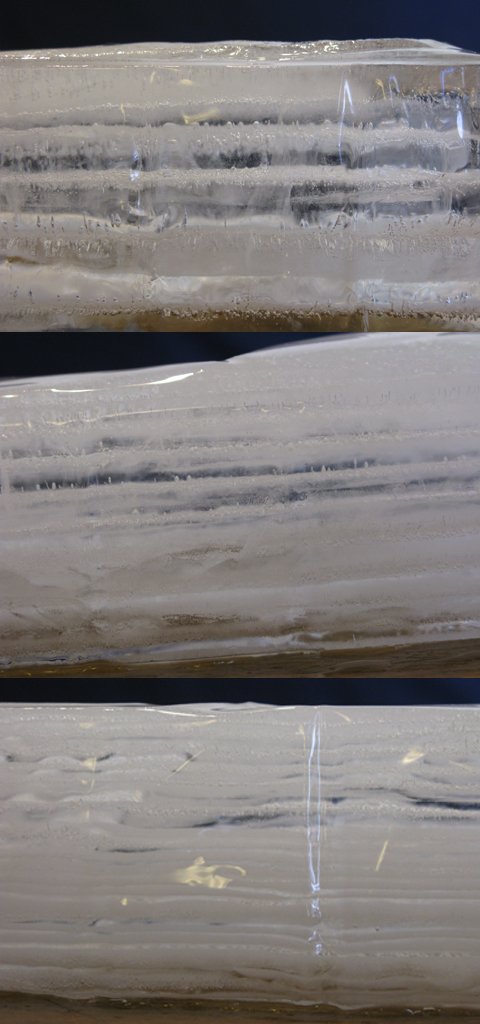The other night a friend of mine told me that she read something about clear ice, which as you may recall is a topic of interest of this blog. Naturally I forgot what she said (we were at a bar, remember) but the next day I found the following email I had sent to myself:
"Clear ice old japan sawdust"
The amazing thing is that when you put that into Google the very first story it comes up with is what I assume is the exact thing my friend was talking about. In this story on natural ice (popsicles) in Japan, a person in the story gives a quote that could prove useful.
Masao Yoshiara, the fourth-generation president of the company, said: "In Nikko, the daily lowest temperature in winter averages around minus 10 C, ideal for making crystal-clear ice.
"If it's colder than that, ice can be made quickly but it is not solid enough. Here, ice grows 1 centimeter thicker a day. When ice becomes about 15 centimeters thick over half a month, we cut out ice blocks. If an ice block is thicker than that, it contains cracks."
Minus 10 degrees Celsius is 14 degrees Fahrenheit. I don't know the temperature of my home freezer, but it's worth investing in a thermometer to find out. Perhaps slow freezing equals clearer ice.
The other factor we'll have to consider about pond ice is that the bottom never freezes. Thus the air that is a major factor in cloudy ice is still in the warmer water below the surface layer of the ice.
This is another strategy I've been considering in attempting to get clear ice in the freezer: if I place a good insulator at the bottom and sides of the water container that doesn't cool down nearly as fast as the water (for example a super thick glass bowl, or a pan of ice that sits on a stone surface), will that cause all the air in the water to migrate to the bottom and freeze last?
This reading inspires a lot more ice experiments to come. I'm glad I emailed myself from the bar.
An index of ice experiments on Alcademics can be found here.

